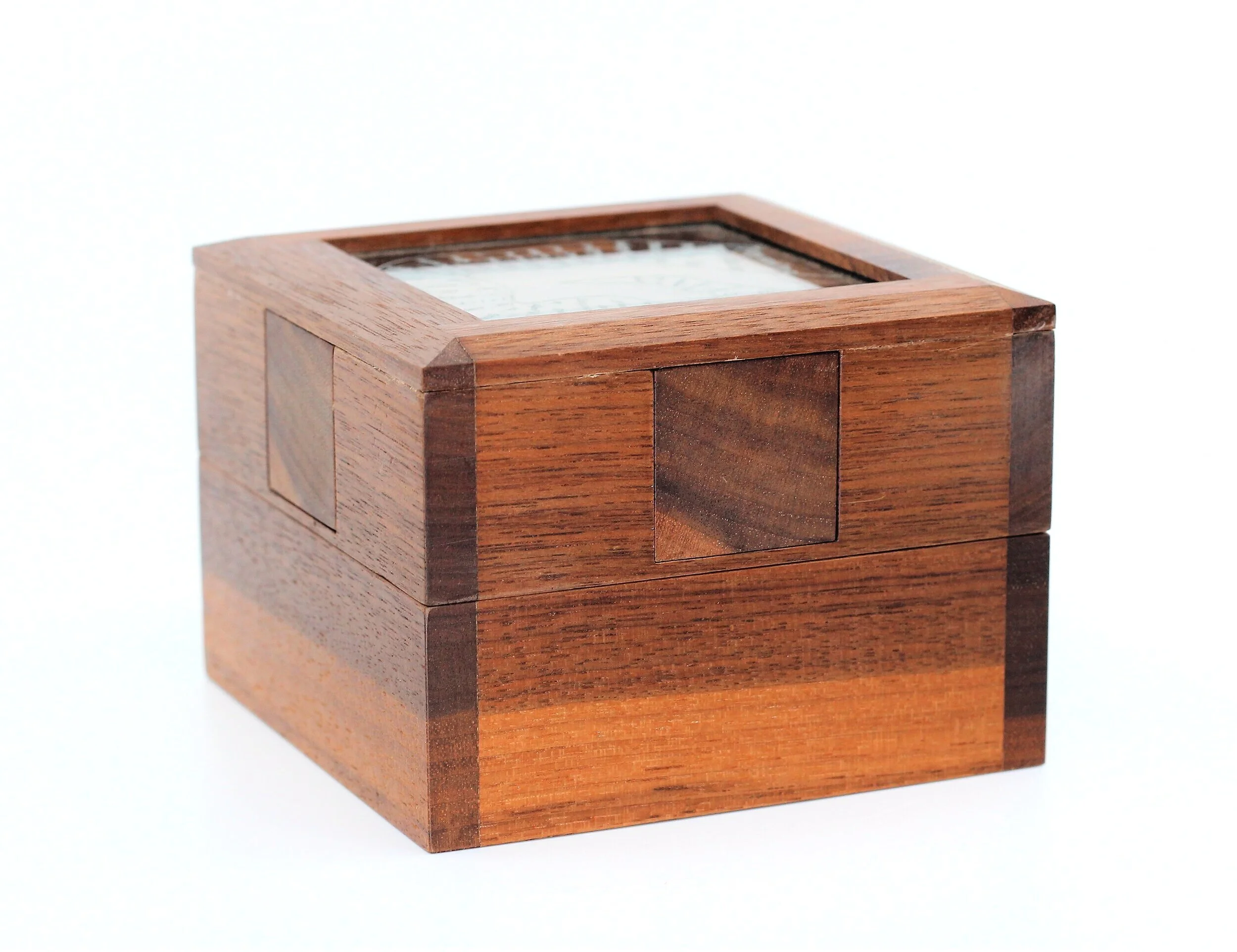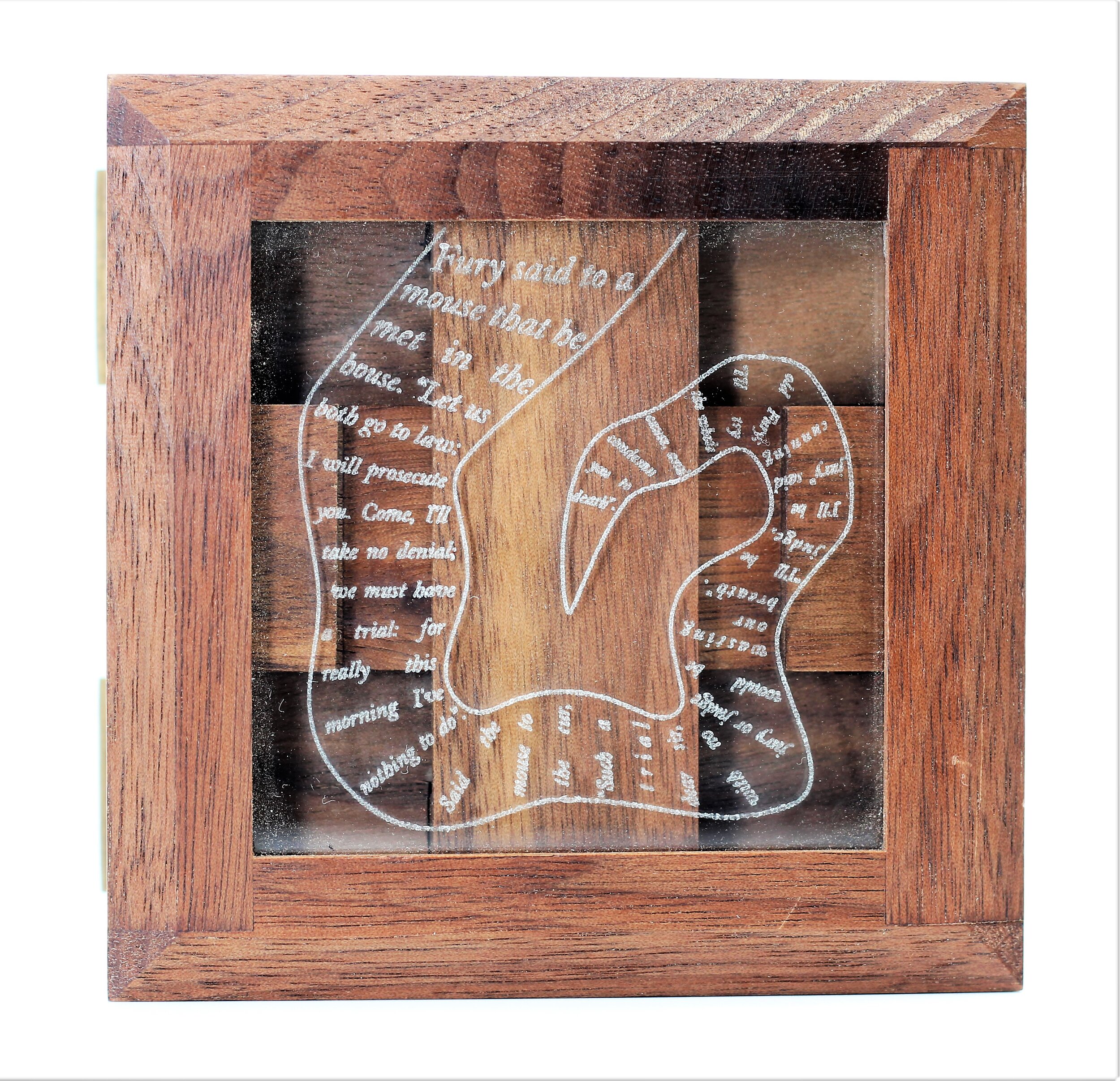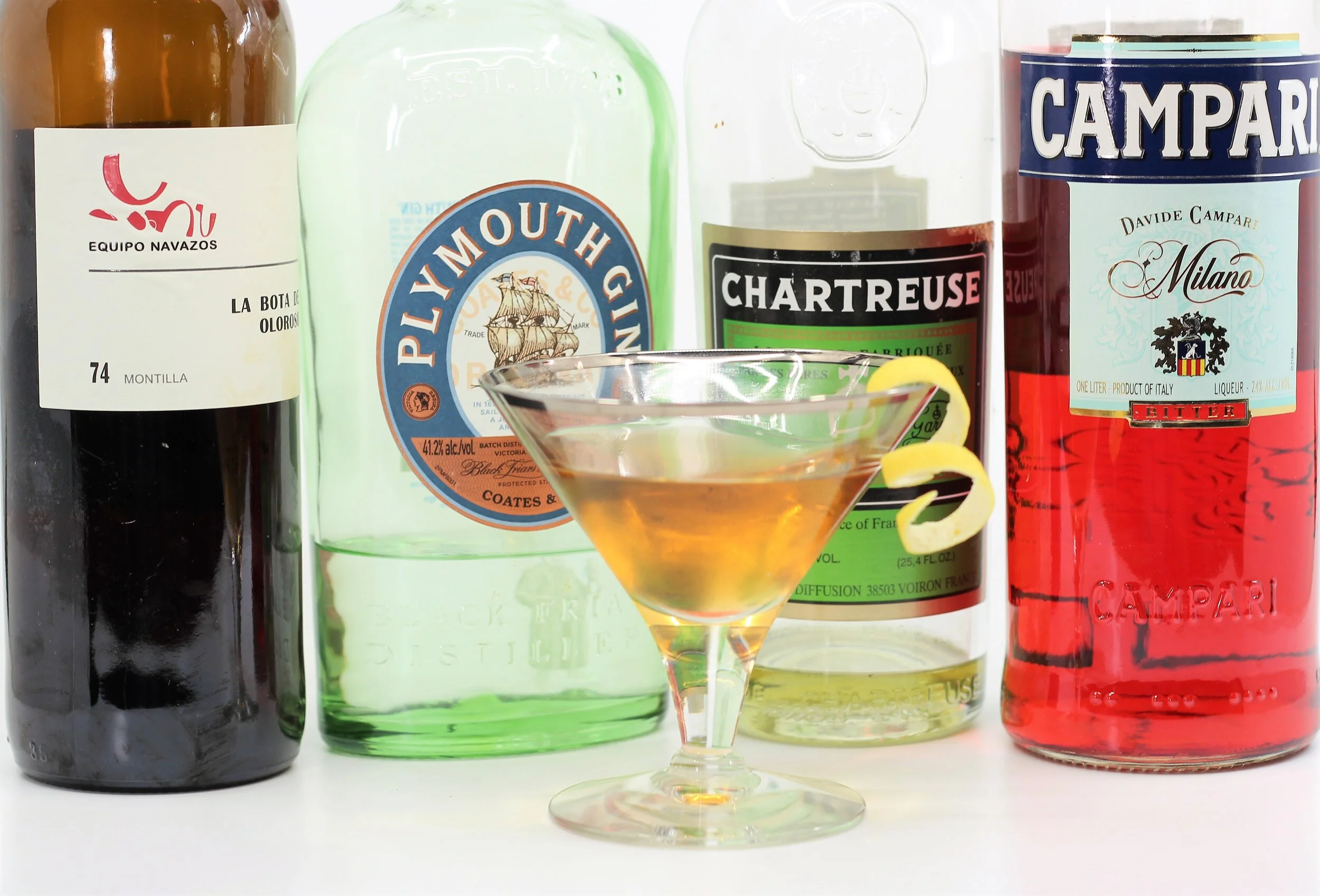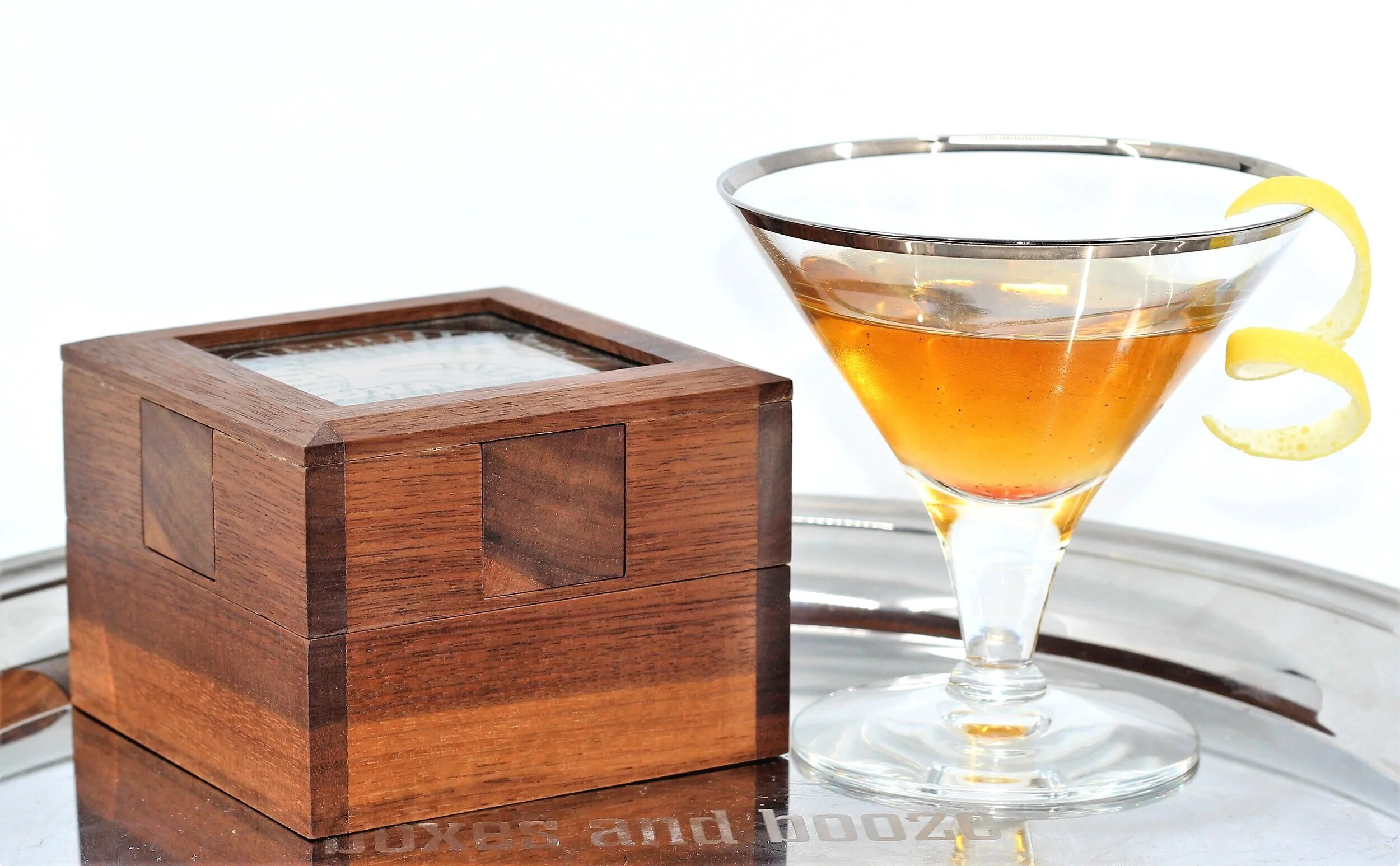The Mouse’s Tale
LCPP - Part VI
So rested he by the Tumtum tree
And stood awhile in thought.
- Lewis Carroll
Dr. Simon Nightingale knows a lot about what makes a great puzzle. This is not mere conjecture. He has applied his formidable mind to the study of this question, and has been awarded many accolades for his own creations. He is by trade a neurologist with a specialized research interest in clinical neurobiology. As such he is in a unique position to evaluate the way our minds go about solving complex problems (i.e. “puzzles”). He explains that in neuro-cognitive science there are three basic processes at play. First is intuition which “is fast, effortless and incredibly powerful. It has evolved over millions of years in all creatures with a brain - and non-human animals rely on this exclusively. Intuition is usually right, but it is very prone to illusions, biases and prejudice and when it’s wrong it’s often very wrong - much more so than you may realize.” Next is conscious logical reasoning “which, with a few minor exceptions in some of the higher primates, is unique to man and evolved relatively recently. … Conscious logical reasoning is hard work and to be honest people don’t like to do logical reasoning because it really is an effort. Bertrand Russell famously said “Most people would rather die than think and many of them do!” They would much rather leave it to intuition and they disarmingly claim that their intuition is “just good commonsense” or that their “first impressions are always right” – but how wrong they usually are on both counts.” Finally he explains the third mechanism of problem solving, the most mysterious and least well understood: unconscious logical reasoning. “It’s quite a controversial subject because, unlike conscious logical reasoning, we don’t know it’s going on until it provides us with the unexpected and unbidden solution and so it’s difficult to study.” Nightingale explains it elegantly, “It probably works like this. Supposing I’m working on a concept puzzle and I deliberately try lots of different tactics. I draw sketches, think and think and I keep coming back to it. Sometimes this process does work out and I consciously and logically work out the answer. I say: “Phew that was hard work but worthwhile”. But more often I get stuck and can’t work it out just by conscious logical reasoning. However, it seems that, while I am deliberately working hard on the problem, I am unintentionally informing my unconscious of the nature of the problem. Then, without being asked, my unconscious brain starts to work on the problem. The conscious hard work earlier has given enough information for the unconscious to recognize the solution and to make sure it’s correct. I know this because that sudden, wonderful, apparently spontaneous “ah-ha” moment always provides you with the right answer. You never go: “Ah-ha…. no, no, no ... that’s not right!””
The Mouse’s Tale by Simon Nightingale
All this discussion of process is fascinating and wonderful, but what about his actual puzzle creations? After all, the process must work for any type of problem and invention. Dr. Nightingale is so successful at creating puzzles that boggle and delight because he is drawn to elegant designs with a set of basic requirements that often may seem impossible to achieve. He prefers his designs to look very simple. He won the coveted “Puzzler’s Prize” at the International Puzzle Design Competition for both his “One Piece Packing Puzzle” and his “NOBOX” – two puzzles that don’t appear to be anything of the sort. Simply place the block inside the box, or place one box inside the other. He also likes his designs to have an elegant arc from start to finish, so they are always “ready” so to speak. Many of his designs are automatically reset once they have been solved, or only require a single move to reset despite how complex the solving may have been. And two of his designs actually reset themselves throughout the solve, if any false move is made. The Mouse’s Tale, his contribution to the Lewis Carroll Puzzle Project, is one. The disarmingly simple appearing box has a hinge on one side and only two moving parts, which can be easily and clearly seen through the acrylic top window. A copy of the famous poem is etched on this as well. Simon had been musing about this puzzle design for a long time, and he relates that the unconscious calculations going on behind the scenes in his brain finally turned on the lightbulb, so to speak, one day while he was literally reclining on a beach in Thailand.
A tale of a tail to be told
A few words about the puzzle box are in order. Despite its “simple” appearance, it is anything but simple. Designed using 2D CAD software, the mechanism hiding inside the walnut box utilizes twelve separate layers of acrylic, and so many hand-made “brass pins, washers, springs, bearings and latch mechanism bits” that Simon gave up counting the individual parts “when I reached 100 for one puzzle”. He relates that after crafting and assembling a set of initial puzzles using 3D printed plastic latches, testing of the mechanism led to those latches all breaking inside. He revised the design to use brass latches, but had the unenviable task of breaking open all of those initial puzzles, and even prying apart all twelve layers of super-glued acrylic. The final reassembled puzzles worked perfectly, and thanks to the completely hidden nature of the mechanism, no one was ever the wiser. In addition to this incredibly complex secret mechanism, there are a few additional surprises in store as well. It’s one heck of a tale.
The Mouse’s Tale Cocktail
To toast this marvelous box I am taking some poetic license with the tale of this tail. The inspiration for the cocktail pairing comes from a classic known as the “Tailspin”. I’ll quote myself for the backstory: “Harry Johnson, a legendary barman of historic significance, is cited as the inventor of the Bijou, a thoroughly modern creation at that time which first appeared in Johnson’s 1900 edition of his Bartender’s Manual. Swanky clientele who frequented the posh hotel bars of New York and Boston wanted sophisticated European flavors, and the Bijou provided with Italian vermouth and herbal Chartreuse combined with gin and a dash of orange bitters. Johnson was quite literally expanding the “color palette” of his cocktails in appearance and flavors, and created the Bijou to reflect these new tastes with three “gems”: gin for diamonds, sweet vermouth for rubies, and green Chartreuse for emeralds. He named it the Bijou, which is French for “jewel”. The drink was immensely popular at the time and might be considered the “cosmopolitan” of the day.
A nice spin on the Jabberwock cocktail
A very similar cocktail (practically identical) emerged a few decades later, named the “Tailspin”. It first appears (as far as one can tell) in the 1936 edition of Mr. Boston’s DeLuxe Official Bartender’s Guide, and was essentially the Bijou with a different name. Eventually, the Tailspin distinguished itself with the addition of a little Campari. In modern times, cocktail aficionado Robert Hess solidified the Tailspin’s identity by defining it as a “rinse of Campari in the glass” prior to adding the other ingredients.” For the Jabberwock cocktail variation of the Tailspin, the sweet vermouth is replaced with moderately sweet Oloroso sherry. A subtle difference, but one that does change the drink completely. And don’t forget the lemon peel “tail”, it’s essential! Cheers!
A pair of tall tales
The Mouse’s Tale
3/4 oz gin
3/4 oz Oloroso sherry
3/4 oz green Chartruese
Campari rinse
Stir the ingredients with ice and strain into a favorite glass. Lemon tail garnish.
For the entire set of puzzles from the Lewis Carroll Puzzle Project see:





